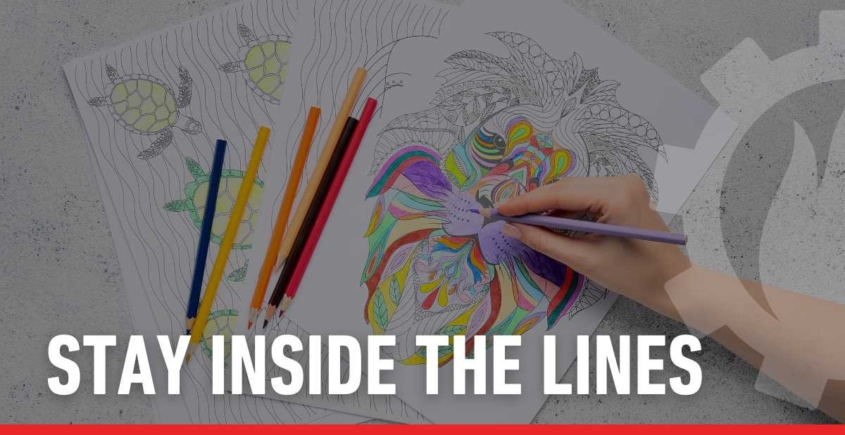Stay Inside the Lines
When we were kids, there was one activity I think we all seemed to enjoy – coloring. Early on, as I was learning my colors and improving my dexterity Mom would let me scribble a bit, just getting some color on the page. As I got older, I can still remember Mom (and brothers, sisters, various teachers saying, “Try to stay inside the lines”. Although knowing it was the right thing to do, I’ll admit, I wasn’t much of an “inside the lines” guy – still not!!). I love it when the grandkids come over to the house and we spend time drawing and coloring – especially my granddaughter Zoe – who does a really good job coloring, (and I do a good job hanging her art on the fridge). I did some digging and found some interesting info about coloring and coloring books I think you’ll enjoy. Now be sure to find those crayons or pencils and color!!

Fun Music while you read:
Special thanks to wikipedia.com, google, discovermagazine.com, thecollector.com, openculture.com, YouTube.com, smithsonianmagazine.com and Sarah Renae Clark for the info.
A coloring book (British English: colouring-in book) is a type of book containing line art to which people are intended to add color using crayons, colored pencils, marker pens, paint or other artistic media. Traditional coloring books and coloring pages were printed on paper or cards.
Some coloring books have perforated edges so their pages can be removed from the books and used as individual sheets. Others may include a story line and are intended to be left intact. Today, many children’s coloring books feature popular characters, often used as promotional materials for motion pictures, television. Coloring books may also incorporate other activities such as connect the dots, mazes, puzzles and the use of stickers. (I love it when restaurants give the kids coloring sheets and crayons, so I can enjoy an adult beverage before eating).
Coloring, in the form of drawing and painting, dates back to prehistoric times. Early humans used natural pigments to create art on cave walls.
In medieval times, coloring was primarily done by artists in manuscripts, with intricate designs and illustrations.
The Renaissance period saw a boom in art and coloring techniques, with more advanced use of color in paintings and illustrations. The concept of coloring books can be traced back to “paper dolls,” which were figures printed on paper that could be colored and cut out.
The first coloring books for children appeared in the 19th century. One of the earliest examples is the “The Little Folks’ Painting Book,” published in the 1880s in England.
Paint books and coloring books emerged in the United States as part of the “democratization of art” process, inspired by a series of lectures by British artist Joshua Reynolds, and the works of Swiss educator Johann Heinrich Pestalozzi and his student Friedrich Fröbel. Many educators concluded that all students, regardless of background, stood to benefit from art education. Coloring books are often used as educational tools to teach children about various subjects, from the alphabet to complex scientific concepts to exploring the environment. Studies show coloring encourages creativity and artistic expression, making it a staple activity for children and adults alike.
The McLoughlin Brothers are credited as the inventors of the coloring book, when, in the 1880s, they produced The Little Folks’ Painting Book, in collaboration with Kate Greenaway. They continued to publish coloring books until the 1920s, when the McLoughlin Brothers became part of the Milton Bradley Company.
Another pioneer in the genre was Richard F. Outcault who authored Buster’s Paint Book in 1907, featuring the character of Buster Brown, which he had invented in 1902. It was published by the Stokes Company and launched a trend to use coloring books to advertise a wide variety of products, including coffee and pianos. Until the 1930s, books were designed with the intent for them to be painted instead of colored. Even when crayons came into wide use in the 1930s, books were still designed so that they could be painted or colored.
As the genre expanded, adult coloring books became popular for their therapeutic benefits, helping to reduce stress and anxiety.
The advent of digital devices has led to the creation of digital coloring books and apps, allowing for a new way to engage with coloring.
Notable artists include Johanna Basford and Ruth Heller (WOW)






Leave a Reply
Want to join the discussion?Feel free to contribute!